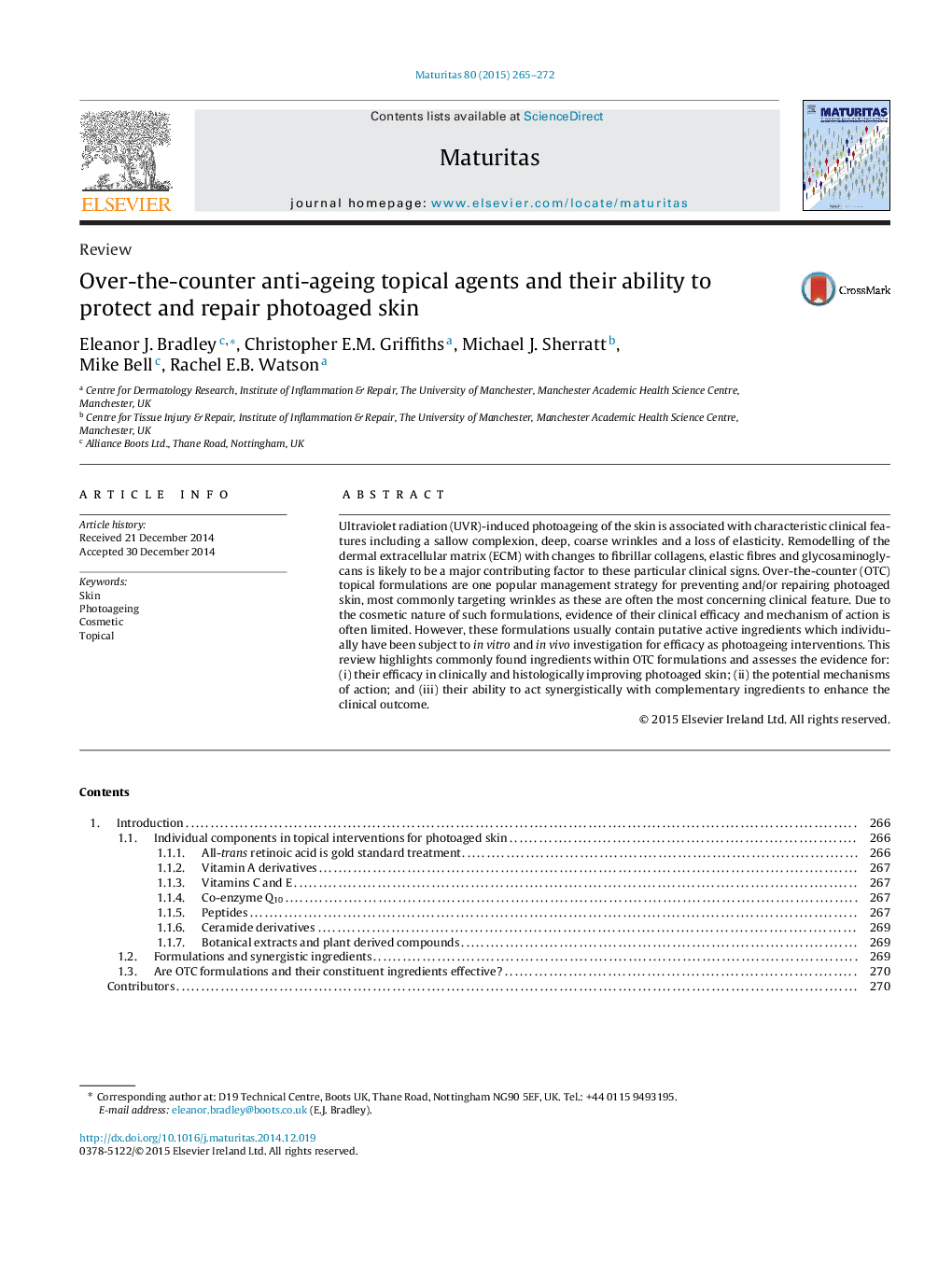| Article ID | Journal | Published Year | Pages | File Type |
|---|---|---|---|---|
| 10743380 | Maturitas | 2015 | 8 Pages |
Abstract
Ultraviolet radiation (UVR)-induced photoageing of the skin is associated with characteristic clinical features including a sallow complexion, deep, coarse wrinkles and a loss of elasticity. Remodelling of the dermal extracellular matrix (ECM) with changes to fibrillar collagens, elastic fibres and glycosaminoglycans is likely to be a major contributing factor to these particular clinical signs. Over-the-counter (OTC) topical formulations are one popular management strategy for preventing and/or repairing photoaged skin, most commonly targeting wrinkles as these are often the most concerning clinical feature. Due to the cosmetic nature of such formulations, evidence of their clinical efficacy and mechanism of action is often limited. However, these formulations usually contain putative active ingredients which individually have been subject to in vitro and in vivo investigation for efficacy as photoageing interventions. This review highlights commonly found ingredients within OTC formulations and assesses the evidence for: (i) their efficacy in clinically and histologically improving photoaged skin; (ii) the potential mechanisms of action; and (iii) their ability to act synergistically with complementary ingredients to enhance the clinical outcome.
Keywords
Related Topics
Life Sciences
Biochemistry, Genetics and Molecular Biology
Ageing
Authors
Eleanor J. Bradley, Christopher E.M. Griffiths, Michael J. Sherratt, Mike Bell, Rachel E.B. Watson,
